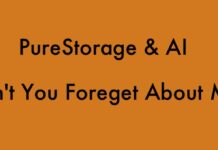Totenpass, a New York state company run by a contrarian investor, gold trader, jeweller, and bitcoin miner, is beta-testing a system for storing data for 100 years on credit card-sized slabs of gold-plated nickel.
The founder and CEO is Roy Sebag, and he explains: ”Our revolutionary storage drive helps you to retain control of your data while reducing your dependence on third parties and the internet, where these files can be easily erased or stolen. We invite you to make your personal history into a tangible and everlasting treasure.”
Totenpass is a German word meaning “passport of the dead” and Sebag says: “I believe that Totenpass technology will be a giant leap forward for the permanent archival of mankind.“ Others might disagree.

Product
There are two Totenpass sizes. The small one is credit card size, 54mm x 85mm, contains 0.2 grams of gold and has 1TB of digital capacity or 2,196 pages of analog visual or textual data. The larger card is smart phone size, 71mm x 143mm, with 0.4 grams of gold and 4TB or 3,894 pages of capacity.
Customers get a card created by uploading data through a website, paying $50 for the small card or $75 for the larger one (with credit card or cryptocurrency — of course), and having the finished product posted to them. Digital information on the card is neither encrypted nor passphrase protected, unless requested. Digital data can be read by a smartphone app. Beta users of Totenpass will not yet have access to the reader app, which is expected to launch in 2022.
Analog data is seen by eye, possibly with the aid of a magnifying glass.

The card requires no electrical power for it to function and so is claimed to support environmental concerns; gold is green.
Technology
The technology relies on digital data being written by collimated laser light and a proprietary light diffraction imprinting technology producing “patterns written into multiple dimensions of the gold surface.” The laser has ”a highly focused 405nm wavelength creating feature sizes of 125nm or 1/1000th of a human hair”
For analog data storage, “the diffractive patterns are arranged with billions of diffractive bits to form pixels that comprise the formats familiar to our human experience such as visual documents and photos.” We’re told “textual files including spreadsheets and Powerpoints, photographs, images, documents and even audio files may be etched directly onto the surface of the Totenpass.”
And: “Totenpass technology prints over 10 billion pixels at a resolution of 25,000 dots per inch at a speed of 1,000 pages per minute making it the fastest analog nano printing technology in the world.”
Technology gibberish
Sebag explains his thinking in a lengthy, 22-page white paper full of partial knowledge, questionable comparisons, portentous language and mistaken assertions.
For example, he says that floppy disks can store data for 20 years while SSDs and magnetic tape only last for ten years. We find this floppy disk lifespan claim bizarre.
Sebag writes: “We believe authors, artists, and thinkers will embrace the Totenpass as the primary method for protecting their intellectual property.” Right.
He boasts the “Totenpass is built from solid gold and nickel, which inherently resist destruction, never tarnish and will therefore outlive all other ephemeral forms of data storage, from hard drives to Cloud servers.” The Totenpass cards are claimed to be disaster-proof.
This idea of the Totenpass’s ability to “inherently resist destruction” is meaningless. It doesn’t consider attack by file, drill or grinding wheel, to state the obvious. It also neglects to consider aqua regia — a mixture of nitric acid and hydrochloric acid that can dissolve gold.
Sebag mentions DNA storage but doesn’t consider the alternative of Piql film reels in a Svalbard coalmine for 1,000 year storage.
There’s also this: ”The Totenpass user experience interface is beautiful, simple, and login free thus being privacy oriented.” Er … no — not unless the digital data is encrypted and passphrase-protected. Analog data is immediately visible; no privacy there at all.
We think the Totenpass’s natural marketing home is in the advert pages of in-flight magazines along with earwax removal devices, peletons, and outdoor bluetooth speakers. It will probably do very well there indeed.








